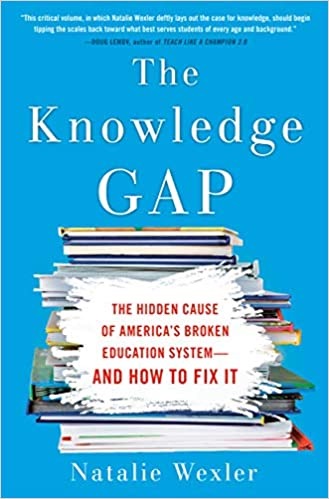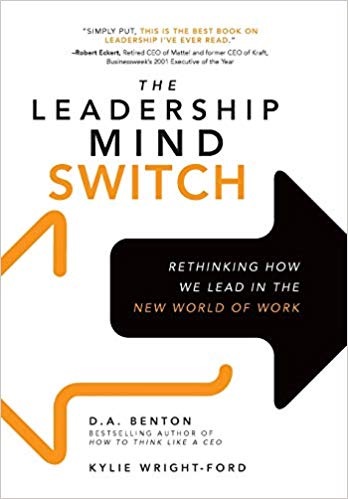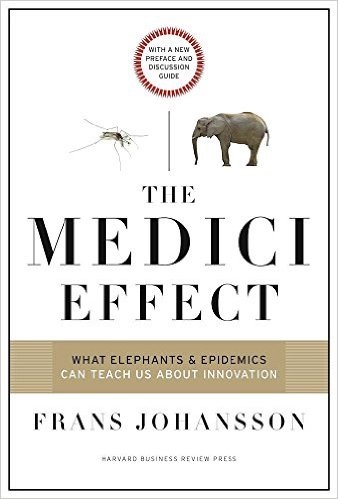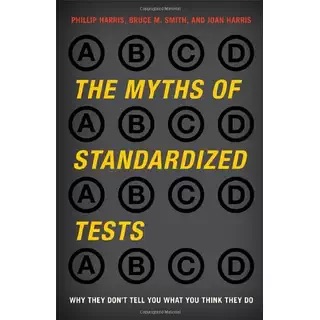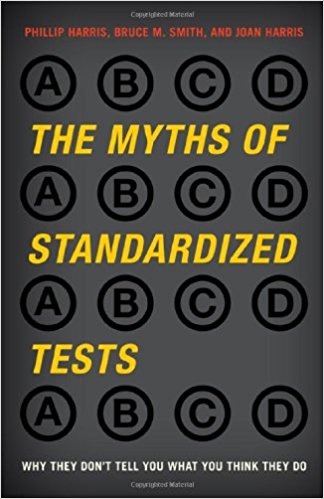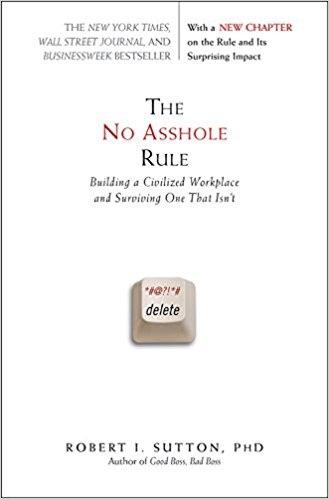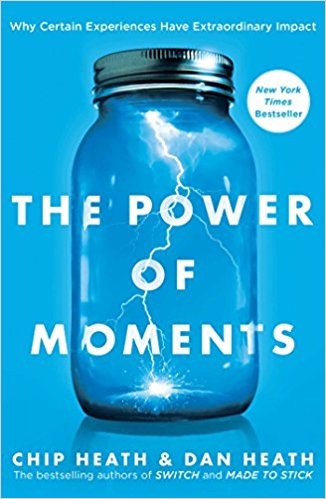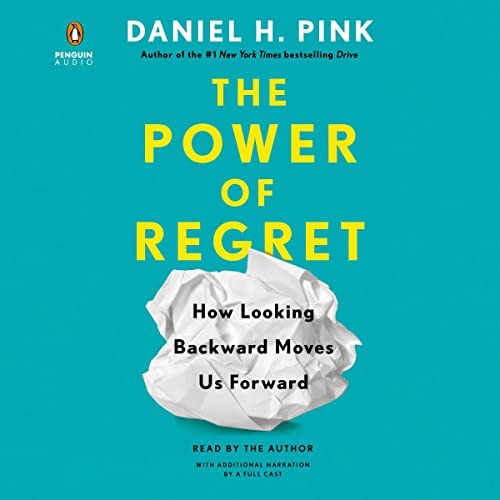Archive for the ‘Book Summaries’ Category
Monday, April 13th, 2020
The Knowledge GAP: The Hidden Cause of America’s Broken Education System and How to Fix It by Natalie Wexler confronts the difference between content-rich and skills-based ELA curricula and makes a strong case for the former. She argues that students need a strong knowledge base in their long-term memories in order to comprehend complex text and to think critically. They also need systematic phonics instruction to learn how to decode words as they gain knowledge beyond their personal sphere. She sees a shift away from a focus on skills and leveled readers slowly taking place.
Part One – The Way We Teach Now: All You Need Is Skills – 1. The Water They’ve Been Swimming In
- The main point here is that all over the country, the focus in elementary schools is on teaching reading skills using texts that shun any meaningful history or science content. Math is also given a lot of attention as it is the other subject that shows up on federally mandated tests and test prep takes up a significant amount of time in most schools. Meanwhile, the achievement gap, which is really a test-gap, has not budged in twenty-five years. History and science are shunned in the early grades as they are widely considered to be not developmentally appropriate.
2. A Problem Hiding in Plain Sight
- An experiment from 1987 demonstrates the importance of prior knowledge when it comes to comprehension. It involved presenting students with texts that involved the play by play of a baseball game. It showed that bad readers who knew a lot about baseball outperformed good readers who didn’t. The idea is that real knowledge from social studies and science should be embedded in all reading lessons. This implies that the gaps we see on tests are more likely to be knowledge gaps than skills gaps.
- History is a series of stories and kids love stories. The same is true for science topics. It’s ironic that abstract concepts like captions and symbols are considered appropriate for six-year-olds while information from history, science, and the arts are not. Teaching disconnected comprehension skills boosts neither comprehension nor reading scores. They are analogous to empty calories.
Next Natalie explains why poor kids don’t generally do as well in school. At home, they are exposed to less conversation and less complex vocabulary. They also engage in less turn-taking conversation and debate with parents. Parents read more to them and introduce them to more knowledge about the real world. This knowledge gap only widens over time as students who start out with more learn more. By using texts light in knowledge to teach skills, schools are the problem handing in plain sight. You can’t think critically if you don’t have a knowledge base to think with. Students also need to write about what they are learning.
3. Everything Was Surprising and Novel
- The focus here is on the work of Daniel Willingham. The two basic components of reading are decoding and comprehension. They are treated as one subject, but factors leading to success in each are fundamentally different. Instruction in phonics can teach decoding. As for comprehension, it depends on how much vocabulary and background knowledge the student has. It can be achieved naturally if you have enough information. Relying on teaching strategies to teach comprehension can explain the disastrous results we have seen. Teaching content is teaching reading. Reading tests are really knowledge tests in disguise as they draw on it to assess comprehension.
- Much of the problem can be laid at the feet of the schools of education. They spend little or no time on practicalities like classroom management. They seem to think that the more removed they are from ordinary concerns the more prestige they will garner. They aren’t big on exposing students to the findings of science. Most are also responsible for teaching that you should use strategies and skills for teaching comprehension and not using them much to teach decoding.
- Another reason some avoid testing content is that anything can be easily looked up on the Internet. What they miss is if you have to spend an inordinate amount of time looking things up, you will interrupt the flow of understanding that comprehension depends on. Retrieving information from long-term memory serves to reinforce it. You also might look up the wrong meaning of a word with multiple definitions.
4. The Reading Wars
- Here we get some history regarding Rudolph Flesch’s 1950’s studies and his conclusion that the systematic teaching of phonics was necessary to help students learn how to decode text. His book Why Johnny Can’t Read was a big sensation. This was the beginning of the Reading Wars. On the other side was the “whole language” movement. This turned somewhat political as teaching whole words was considered progressive and was largely adopted by the left who didn’t trust academics has they had never taught in an elementary classroom. Unfortunately, the Reading Wars aren’t over, they have only gone underground.
- What Flesch and his opponents missed was that unless you build knowledge and vocabulary, the ability to decode or recognize whole words wouldn’t count for much. Large adoptions of whole language programs largely failed. A phonics-based program called Reading First showed promise, but congress defunded it in 2008. It also treated reading as a self-contained subject, which leads to a decrease in subjects that could build knowledge and vocabulary. It’s also hard to change the beliefs of teachers when you don’t explain the underlying ideas.
Posted in Book Summaries, Education Books, Leadership Books | Comments Off on The Knowledge GAP: The Hidden Cause of America’s Broken Education System and How to Fix It by Natalie Wexler
Monday, April 8th, 2019
The Leadership Mind Switch: Rethinking How We Lead In the New World of Work by D. A. Benton and Kylie Wright-Ford makes an excellent textbook for any modern course on leadership, including educational leadership. It deals with how our modern culture impacts how leaders need to think and operate and it also deals with leadership qualities that never change. Get a copy for any aspiring leader you know.
Introduction
- The leadership game has changed over time and continues to do so. The book’s premise is that a mind switch is needed now to be ready for the future that will be vastly different. This book offers tools and information that you will likely need to lead in the future. You will need skills to understand and relate to people of all kinds. The more human aspect of leading is emphasized here. Leadership is everything in business and schools and since someone is going to lead it might as well be you.
Part One: Leading Today and Tomorrow 1. The Changing World of Leadership
- We know that information is rapidly expanding and that there will be welcome and unwelcome consequences. Technology is ever expanding and robots may soon join your staff. Telecommuting is on the increase so you need to be able to communicate with others from almost anywhere in the world. Office spaces and hours are changing and some people, even leaders, don’t have desks. Leadership today is about character and communication. They will have more daily contact with everyone and must be able to connect with all types of people.
- Leaders will have to understand and use technology and decide how it will be used. Leaders must decide the rolls that things like virtual reality, augmented reality, artificial intelligence, and the Internet of things will have. Worker turnover has increased so it’s up to leaders to be the kind of people who can persuade workers to stay. The workplace will be more diverse so the leader needs to be able to relate to everyone. They must understand who they are speaking to, tell stories, and know that feelings count. They also must avoid generation gap issues. A description of the generations is included here.
2. Rethinking Our Leadership Qualities
- Leadership is ever evolving. After setting a course (vision) a leader needs to develop a team that collaborates, cooperates, and enjoys each other. They need to be informed, curious, stable, positive, and accountable. They need to be able to relate to all generations and with people from all cultures. The one thing all followers want is trust and loyalty. Without them, nothing else matters. You must be accessible and not play loose with the facts. Speak frankly but be discreet.
- Keep in mind that older workers are more likely to be cynical. Clear the air when you slip up with something you said, done, or implied. Do it privately on the phone or in person, not via email or text. Project confidence, which is a combination of courage and curiosity. Show that you are continuously learning and willing to try new things. Know your limitations and ask for help.
- Know when it’s time to change course rather than being stubborn. When it comes to technology lean towards early adoption. As a leader, you need to have a wide range of interests. This is where being curious helps. Be open-minded and nonjudgemental. Learn to ask good questions and listen well to the answers. The concept of grit is covered here. See my summary of Angela Duckworth’s book Grit: The Power of Passion and Perseverance.
3. Developing Our Leadership Behaviors
- You need to be consistent and set an example every day. Don’t be moody. Everything you say and do communicates a message. In addition to words, things like posture, clothes, tone of voice, body language, facial expression (smile), and energy level communicate. When you do talk, don’t talk too fast. With younger people, you may find yourself texting more. Tell staff to only send emails that they would put on the wall for everyone to see and not to read between the lines. Some people are comfortable with physical contact, but not everyone.
- Stories are important and powerful. You need to set the scene, explain what happened, and wrap it up with a moral or key takeaway. Keep current and interesting, which will make you dynamic. Dynamic leaders introduce new ideas, are creative, bring energy and focus, change with the times, consider all situations, and model confident behavior. They enable change they don’t just manage it. They adapt to new technology, make course corrections when needed, and model the right attitude. They make work fun, interject humor, and accept and embrace all team members. They constantly recognize the actions they want to see.
Posted in Book Summaries, Business Books, Leadership Books | Comments Off on The Leadership Mind Switch: Rethinking How We Lead In the New World of Work by D. A. Benton and Kylie Wright-Ford
Sunday, March 10th, 2013
The Little Book of Talent: 52 Tips for Improving Your Skills by Daniel Coyle (© 2012, Bantam Books: New York, NY) is a bit over 100 pages and offers specific tips for developing talent. Daniel relies on abundant research to help you copy the techniques used by the top performers in many fields. In addition to growing your own talents, this book will help parents, educators, and coaches increase the success rate of their students. Every home should have a copy, so click the icon at the bottom of any page to get yours.
Posted in Book Summaries, Business Books, Education Books, Leadership Books | Comments Off on The Little Book of Talent by Daniel Coyle
Monday, May 2nd, 2022
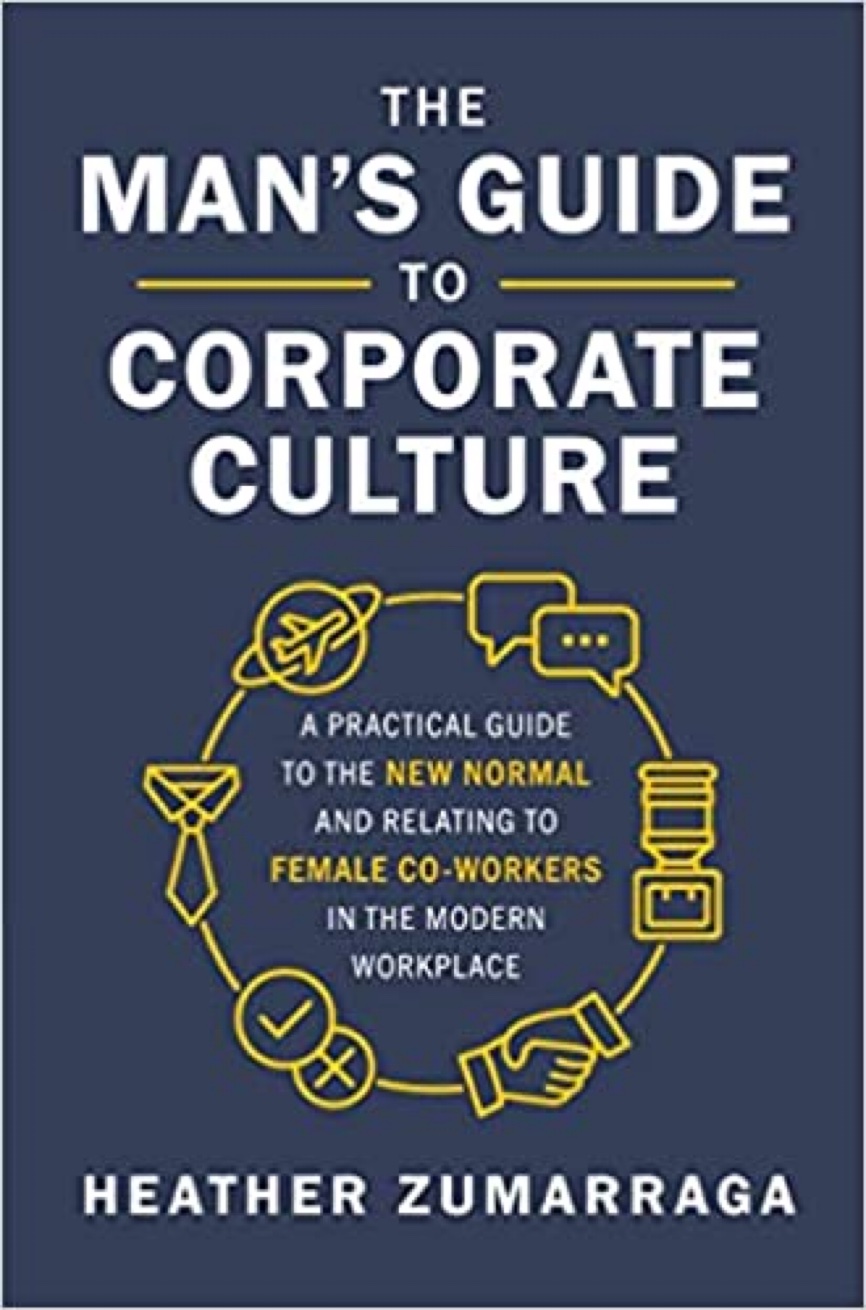
The Man’s Guide to Corporate Culture: A Practical Guide to the New Normal and Relating to Female Co-Workers in the Modern Workplace by Heather Zumarraga explains how the modern workplace has evolved over time and how men (and women) can navigate it while staying out of trouble. Things like accusations of sexual harassment or worse can be real career enders so take Heather’s advice if you want to stay afloat in what can seem at times like a tsunami.
Who is This Book for and How to Read This Book/Introduction
- This book is for men who work with women, corporations, small business employers, human resources departments, college students, and men and women couples. Here we find the chapters intended for men, corporations, and both men and women so you can skip around if you choose.
- Sionce the national discussion of sexual harassment in the workplace has gone to a whole new level, many men have become fearful of the perceived power that women have. The big change is that women are no longer afraid to speak up and are often encouraged to do so. This book is designed to help men learn to collaborate and find synergies with female colleagues so that they can take advantage of the skills and qualities that women offer. You can only do your best if you feel comfortable and this book should help. It’s based on the author’s experience along with hundreds of interviews.
1. It’s a Woman’s World and You Are Just Working In It.
- Women hold more jobs in the US than men and earn more college degrees at every level, which strongly correlates with higher incomes. Heather sites a number of successful female CEOs of some of the country’s largest companies. Yet 60% of male managers are not comfortable participating in normal workplace activities with women, such as mentoring and socializing. This serves to deprive their company of the talent of half of the population. The modern trend is for organizations to forbid romantic relationships in the workplace and even with customers and suppliers employees. Relationships that result in ex-lovers working together can create a hostile working environment. Many top-level executives have lost their jobs for inappropriate behavior and this list includes some women. The trend is finally toward a more ethical corporate governance.
2. How Did We Get Here?
- In 1986 the Supreme Court ruled unanimously that sexual harassment that was sufficiently severe or pervasive created a hostile or abusive working environment. Prior to that women were limited to lawsuits when the harassment was part of a quid pro quo for promotion. Now the simple act of pervasive harassment is enough to sue in federal court. Derogatory remarks about physical appearances, unwanted flirtation, and touching are possible allegations. Courts use the reasonable person standard when deciding if the behavior amounts to sexual harassment. The genders of the people involved are not relevant.
3. The Pendulum Has Swung Too Far
- As a result of this situation, many men worry about giving negative feedback to women. The media has created a world where some women are comfortable believing men are the enemy. The negative bias against men results from the movement going overboard. There are so many accusations it’s hard to know what to believe. A critical mass of accusations, however, makes it obvious that there is some truth to it as some recent high-profile cases have shown. False accusations or even misplaced suspicions, now have absurdly powerful repercussions. If you ever have to be deposed as part of a legal process, bring an attorney. Unfortunately, almost any behavior such as a shoulder pat can now be stretched into harassment. As a result, many men are reluctant to hire attractive women or hire women for jobs involving close interpersonal interactions. Also, the incarceration rate (90%+), the homicide rate (67%), and the homeless rate (70%) imply that men have a major crisis.
4. Let Mars Be Mars and Venus Be Venus.
- There is an agreement in the literature that men and women are different. Women tend to have better verbal abilities like reading comprehension and writing. They are also better at retrieving information from long-term memory. Men are better at juggling things in working memory and have better visuospatial skills. Men are more visually oriented and have stronger responses to sexual stimuli. The advice here is that you have a frontal lobe so use it to self-regulate. Think of it as the brakes for your brain.
- Women demonstrate more facial expressions than men and are better at reading them. Men will be distracted by bare skin, short dresses, and high heels. The lesson here is look at her face. You can compliment apparel but not physical appearance. Pay attention when women are talking and consider turning off your phone. Maintain eye contact, don’t interrupt, and paraphrase what is said. You really don’t have the luxury of not liking women or other men at work. If you do you will give it away somehow. Demonstrate you care by showing an interest in their personal life.
Posted in Book Summaries, Business Books, Leadership Books | Comments Off on The Man’s Guide to Corporate Culture: A Practical Guide to the New Normal and Relating to Female Co-Workers in the Modern Workplace by Heather Zumarraga
Friday, March 18th, 2011
This book by Frans Johansson looks at breakthrough insights at the intersection of Ideas, concepts, and cultures. He recommends that you expose yourself to a range of cultures, learn differently, reverse your assumptions, and take on multiple perspectives. The tips on brainstorming research are worth the price alone. Johansson is a writer and consultant who lives in New York City.
Cultures Are Different
- How different cultures view a grasshopper? USA – pest, China – pet, N. Thailand – appetizer
- How different cultures view the color yellow? USA – cowardice, Malaysia – royalty, Venezuela – lucky underwear
Why Study Multiple Cultures
- Exposure to multiple cultures gives you more ways to look at an issue. Cultures can be ethnic, class, professional, or organizational in addition to geographic. This promotes open, divergent or even rebellious thinking. One is more likely to question rules, traditions, and boundaries. Languages codify concepts differently. Fluency in another language can promote varied perspectives during the creative process.
Learning Lots on Your Own
- Broad education and self-education are two keys to learning differently. Most fundamental innovations are achieved by people who are either very young or very new to the field. Learning fields on your own increases the chance of approaching them from different perspectives. Darwin: “all that I have learned of any value was self-taught.”
Prepare Your Mind
- Louis Pasteur found a forgotten culture of chicken cholera bacteria. When chickens were injected with it they got sick but recovered. These same chickens when injected with a fresh culture survived. Pasteur realized that the chickens had been immunized and that his old culture served as a vaccine.
Tags: Frans Johansson, Innovation, Medici Effect
Posted in Book Summaries, Business Books, Education Books, Leadership Books | Comments Off on The Medici Effect: What Elephants and Epidemics Can Teach Us About Innovation
Wednesday, September 7th, 2016
I’m still on the road, so today you get a shortened summary of The Myths of Standardized Tests: Why They Don’t Tell You What You Think They Do by Phillip Harris, Bruce M. Smith, and Joan Harris. If you agree with me that the current state tests imposed by the federal government are harmful to students and teachers, you will find ammunition here to help me fight this battle. If you want the longer summary, click here.
Scores Correlate With Wealth
- The tests rely on items closely linked to socioeconomic status and inherited aptitudes to spread out the scores. As such they tend to measure what students bring to school, rather than what they are taught once they get there.
Just Pass or Just Fail?
- Any student can go from proficient on one version to needing remediation on another. Items are chosen to spread out the scores of the test takers. Time limits spread out scores even more. As students can only sit and focus for so long, the tests can only deal with a small fraction of the domain. Some topics have to be skipped. Timed tests also produce test anxiety.
Who Wants to be Judged by a Snapshot?
- Tests depend on the idea that a small portion of a student’s behavior fairly represents the whole range of possible behavior. To draw valid inferences from a test, it must cover more than a small part of the content domain.
What They Don’t Measure
- They don’t measure goals schools pursue like creativity, critical thinking, motivation, persistence, empathy, leadership, courage, compassion, honesty, and curiosity. Students with high scores may be shallow thinkers. Important items that all students should know are left out at the expense of items that half of the students will miss. There are too many standards to use criterion-referenced tests.
Fuzzy Math
- Test scores are not clean, crisp numbers but fuzzy ranges that extend above and below the score, and 5% of the time the true score isn’t even in the fuzzy range
Are They Really Objective?
- A look at how the tests are made reveals a good deal of subjective human judgement from the people who write, edit, and assemble the test items. Setting the standards also requires judgement that occurs in a political and social context. Achievement levels are, first and foremost, policy statements.
Carrots and Sticks by Mostly Sticks
- There is excessive reliance on rewards and punishments. Research shows how rewards dampen interest in, and enthusiasm for, the activity that is rewarded.
Teachers Cheat
- “The more any quantitative social indicator is used for social decision-making, the more subject it will be to corruption pressures, and the more apt it will be to distort and corrupt the social processes it was intended to monitor.
The Narrowing Effect
- High-stakes tests have narrowed and dumbed down curricula and eliminated time spent on untested subjects by about a third, including recess. Tests also drive instruction towards items with one clear, right answer at the expense of open-ended problem solving.
True Predictors
- Nonacademic accomplishments are better predictors for future accomplishments than grades or test scores. Grades are much better predictors than tests since they often consider more qualities than test scores. The best predictors of future accomplishment are similar accomplishments.
The Back of the Bus
- We expect everyone to learn the same things, to the same level, at the same time? What is the point when everyone is unique? Our obsessive focus on academic achievement measured by tests has pushed other goals to the back of the bus.
Posted in Book Summaries, Education Books | Comments Off on The Myths of Standardized Testing – Short Summary
Saturday, February 26th, 2011
The Myths of Standardized Tests: Why They Don’t Tell You What You Think They Do by Phillip Harris, Bruce M. Smith, and Joan Harris (with a little help from ten of their friends) is a MUST read for anyone fighting the current testing system.
Phillip Harris
- Phillip is executive director of the Association for Educational Communications & Technology. He was a faculty member of the faculty of Indiana University for twenty-two years in Psychology and Education.
- Bruce M. Smith was a member of the editorial staff of the Phi Delta Kappan for 27 years and he retired as editor-in-chief in 2008.
- Joan Harris has taught grades one through three for 25 plus years. In 1997 she was recognized by the National Association for the Education of Young Children as the outstanding teacher of the year.
-
The Myths They Debunk
- High test scores at a school means it has high achievement. Test scores provide objective achievement information. Rewards and punishments based on tests motivate. Improved test scores imply improved learning. All valuable content is tested. Standardized test scores are the best form of assessment. If you move to a district with high scores you will do better.
It’s An Emergency
- The authors believe that our schools are under attack by the tests that continue to seep into our schools. They sap the energy and enthusiasm of educators and drain the life from children’s learning. Some of the motivation is commercial and some is caused by “the tyranny of good intentions.” In this book they hope to persuade you of their case and arm you with some basic understanding of standardized tests and the mythical assumptions that underlie them that are used to make policy and drive practice. The lives of our children and our future is at stake. Our schools do have problems, but they won’t be fixed by another truckload of test scores.
Tags: Bruce Smith, Joan Harris, NCLB, Obama Blueprint, Phillip Harris, Standardized Testing
Posted in Book Summaries, Education Books | Comments Off on The Myths of Standardized Tests: Why They Don’t Tell You What You Think They Do
Monday, September 21st, 2015
The No Asshole Rule: Building a Civilized Workplace and Surviving One That Isn’t by Robert I. Sutton ©2007 & 2010 should help organizations of all kinds make their cultures less toxic and more productive. Click at the bottom of any page to get a copy so you can get started dealing with jerky behavior where you live and work.
Robert I. Sutton
- Robert is Professor of Management Science at the Stanford Engineering School and researcher in the field of evidence-based management. He is a popular speaker and the author of two other best sellers Good Boss, Bad Boss: How to Be The Best…And Learn From The Worst and Scaling Up Excellence: Getting to More without Settling for Less with Huggy Rao.
1. Asshole Defined
- With a title like this, it is essential to define what one means by the term asshole. Robert offers two tests we can use to spot this type of person. Test one: After talking to the person, do you feel oppressed, humiliated, de-energized, or belittled? Test two: Does this person aim venom at people who are less powerful rather than at people who are more powerful? He also gives us a list of actions that assholes use. They include personal insults, uninvited contact, threats and intimidation, sarcasm, two-faced attacks, dirty looks, and ignoring people. We are cautioned that there is a difference between a temporary asshole and a certified asshole, as nearly all of us act like one at times.
- Just because you want to avoid hiring assholes, neither do you want to hire spineless wimps. What is needed is for teams to engage in conflict over ideas in an atmosphere of mutual respect. Robert even suggests taking classes in constructive confrontation. When he studied this topic, Robert found that just about everyone he talked to volunteered stories about abuse in their work environment. While every work environment has a significant problem with this, some are worse. It seems that nurses may lead the league when it comes to taking abuse from doctors, along with patients, their families, fellow nurses, and supervisors. Men and women are victimized at about the same rate and the lion’s share of abuse is within gender. What you want are people who are consistently warm toward people who are unknown or of lower status.
Posted in Book Summaries, Business Books, Leadership Books | Comments Off on The No Asshole Rule: Building a Civilized Workplace and Surviving One That Isn’t by Robert I. Sutton
Monday, February 5th, 2018
The Power of Moments: Why Certain Experiences Have Extraordinary Impact by Chip and Dan Heath makes the case that we all experience moments that make a huge difference in our lives and that there are things we can do to make them happen. You need to be aware of moments in your life and look for ways to make them happen again for yourself and those you serve. This is a must-read for any leader.
1. Defining Moments
- We all have defining moments in our lives. This book has two goals. One is to examine defining moments and identify the traits they have in common. Two is to show how to create defining moments by making use of these traits. When we reflect on an experience, we do not average our feelings over time. Rather, we focus on the high and low spots, the peaks, and the pits, along with the beginnings and ends.
- One or more of the following elements are involved. 1. Elevation: Something happens to elevate the experience from those surrounding it. 2. Insight: Here is where you suddenly realize something about yourself or the world that makes a difference. 3. Pride: This is when you accomplish something special. 4. Connections: Defining messages are social. Special moments become more special when you share them with others.
2. Thinking in Moments
- There are three kinds of situations that stand out as moments in our lives. They are transitions, milestones, and pits. The goal is to mark transitions, commemorate milestones, and fill the pits. Here the Heath’s tell some stories of how employers can make transitions like the first day on the job special, how banks can help commemorate savings and mortgage milestones, and how service providers can fill pits as soon as they show up. At the end of this section and each section in the book they include a clinic, which demonstrates how the book’s ideas can be put to use.
Posted in Book Summaries, Business Books, Education Books, Leadership Books | Comments Off on The Power of Moments: Why Certain Experiences Have Extraordinary Impact by Chip and Dan Heath
Saturday, April 23rd, 2022
The Power of Regret: How Looking Backward Moves Us Forward by Daniel Pink deals with the power we can draw from dealing with our regrets in a thoughtful manner. Regrets deal with things you can control so you need to take action when possible to make things better and move on from things that can’t be fixed. Research shows that people who do this are healthier and happer. Thanks, Dan for this vital life lesson.
Part One. Regret Reclaimed – 1. The Life-Thwarting Nonsense of No Regrets
- Fron popular songs to literature to advice columns we hear over and over again about how successful people supposedly have no regrets. In this book, Pink shows not only that this is wrong-headed thinking, but when properly used, analysis of your regrets can serve to improve your life. We all have a portfolio of emotions and most of us try to have a bias in our lives for positive ones. That makes sense, but we also need to deal with negative emotions to help us avoid harm, be it physical or emotional. The purpose of this book is to show you how to use regret’s many strengths to make better decisions, perform better at work, and bring greater meaning to your life. Pink draws on his analysis of two massive surveys to accomplish this goal.
2. Why Regret is Human
- Regret is the unpleasant feeling associated with some action or inaction a person has taken which has led to a state of affairs that the person wishes were different. It is more understood as a process than a thing. As we mature, our brains naturally develop to experience regret. It is associated with the orbitofrontal cortex. People with lesions in this area typically do not experience regret. The same is true for people with Huntington’s and Parkinson’s disease. Reget is the most common negative emotion as things you regret are your own fault. They are things where you had control and constantly involve some comparison.
3. At Least’s and If Only’s
- These are two types of counterfactuals. When you think at least, you are thinking about how things could have been worse. When you think if only, you are thinking that an outcome could have been better if you had done something different. Most people engage in if only thinking much more than at least thinking. If only thinking degrades our feelings now, but it can improve our lives later. This is one way regret can help us do better tomorrow.
4. Why Regret Makes Us Better
- If you actively regret something you are not likely to do it again. A central finding is that regret can deepen persistence, which almost always elevates performance. Even thinking about other people’s regrets may confer a performance boost. Regret, however, does not always elevate performance. Lingering on regret for too long can have the opposite effect. Setbacks can supply fuel for future performance. Making mistakes and learning from them via regret is a path to growth.
- When it comes to things you regret it is key that you not wallow in them or dodge them altogether. Doing so will just make things worse. These feelings should result in thinking that results in future action that makes things better or avoids further pain. Think of this action as an evaluation that can be instructive. In short, if you make a mistake you need to ask yourself “what can I learn from it.” (Doug: This is a guiding principle for me.)
Posted in Book Summaries, Business Books, Education Books, Leadership Books | Comments Off on The Power of Regret: How Looking Backward Moves Us Forward by Daniel Pink
